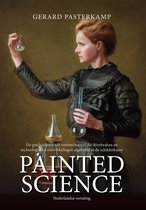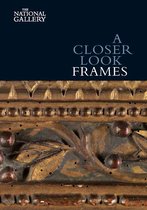Science and Art The Painted Surface
Afbeeldingen
Sla de afbeeldingen overArtikel vergelijken
- Engels
- Hardcover
- 9781849738187
- 14 augustus 2014
- 620 pagina's
Samenvatting
A series of case studies to show how the cooperation between science and humanities can lead to the developments in knowledge and conservation of paintings.
Science and art are increasingly interconnected in the activities of the study and conservation of works of art. Science plays a key role in cultural heritage, from developing new analytical techniques for studying the art, to investigating new ways of preserving the materials for the future. For example, high resolution multispectral examination of paintings allows art historians to view underdrawings barely visible before, while the use of non-invasive and micro-sampling analytical techniques allow scientists to identify pigments and binders that help art conservators in their work. It also allows curators to understand more about how the artwork was originally painted.
Through a series of case studies written by scientists together with art historians, archaeologists and conservators, Science and Art: The Painted Surface demonstrates how the cooperation between science and humanities can lead to an increased understanding of the history of art and to better techniques in conservation. The examples used in the book cover paintings from ancient history, Renaissance, modern, and contemporary art, belonging to the artistic expressions of world regions from the Far East to America and Europe. Topics covered include the study of polychrome surfaces from pre-Columbian and medieval manuscripts, the revelation of hidden images below the surface of Van Gogh paintings and conservation of acrylic paints in contemporary art.
Presented in an easily readable form for a large audience, the book guides readers into new areas uncovered by the link between science and art. The book features contributions from leading institutions across the globe including the Metropolitan Museum of Art, New York; Art Institute of Chicago; Getty Conservation Institute; Opificio delle Pietre Dure, Firenze; National Gallery of London; Tate Britain; Warsaw Academy of Fine Art and the National Gallery of Denmark as well as a chapter covering the Thangka paintings by Nobel Prize winner Richard Ernst.
Science and art are increasingly interconnected in the activities of the study and conservation of works of art. Science plays a key role in cultural heritage, from developing new analytical techniques for studying the art, to investigating new ways of preserving the materials for the future. For example, high resolution multispectral examination of paintings allows art historians to view underdrawings barely visible before, while the use of non-invasive and micro-sampling analytical techniques allow scientists to identify pigments and binders that help art conservators in their work. It also allows curators to understand more about how the artwork was originally painted.
Through a series of case studies written by scientists together with art historians, archaeologists and conservators, Science and Art: The Painted Surface demonstrates how the cooperation between science and humanities can lead to an increased understanding of the history of art and to better techniques in conservation. The examples used in the book cover paintings from ancient history, Renaissance, modern, and contemporary art, belonging to the artistic expressions of world regions from the Far East to America and Europe. Topics covered include the study of polychrome surfaces from pre-Columbian and medieval manuscripts, the revelation of hidden images below the surface of Van Gogh paintings and conservation of acrylic paints in contemporary art.
Presented in an easily readable form for a large audience, the book guides readers into new areas uncovered by the link between science and art. The book features contributions from leading institutions across the globe including the Metropolitan Museum of Art, New York; Art Institute of Chicago; Getty Conservation Institute; Opificio delle Pietre Dure, Firenze; National Gallery of London; Tate Britain; Warsaw Academy of Fine Art and the National Gallery of Denmark as well as a chapter covering the Thangka paintings by Nobel Prize winner Richard Ernst.
Productspecificaties
Inhoud
- Taal
- en
- Bindwijze
- Hardcover
- Oorspronkelijke releasedatum
- 14 augustus 2014
- Aantal pagina's
- 620
- Illustraties
- Nee
Betrokkenen
- Hoofdauteur
- Antonio Sgamellotti
- Tweede Auteur
- Siano Salvatore
- Co Auteur
- Luca Sgamellotti
- Hoofdredacteur
- Antonio Sgamellotti
- Tweede Redacteur
- Brunetto Giovanni Brunetti
- Co Redacteur
- Costanza Miliani
- Hoofduitgeverij
- Royal society of chemistry
Overige kenmerken
- Extra groot lettertype
- Nee
- Product breedte
- 150 mm
- Product hoogte
- 22 mm
- Product lengte
- 210 mm
- Studieboek
- Nee
- Verpakking breedte
- 156 mm
- Verpakking hoogte
- 234 mm
- Verpakking lengte
- 234 mm
- Verpakkingsgewicht
- 1136 g
EAN
- EAN
- 9781849738187
Je vindt dit artikel in
- Categorieën
- Taal
- Engels
- Beschikbaarheid
- Leverbaar
- Boek, ebook of luisterboek?
- Boek
- Studieboek of algemeen
- Algemene boeken
Kies gewenste uitvoering
Prijsinformatie en bestellen
De prijs van dit product is 67 euro en 99 cent.- Prijs inclusief verzendkosten, verstuurd door bol
- Ophalen bij een bol afhaalpunt mogelijk
- 30 dagen bedenktijd en gratis retourneren
- Dag en nacht klantenservice
Rapporteer dit artikel
Je wilt melding doen van illegale inhoud over dit artikel:
- Ik wil melding doen als klant
- Ik wil melding doen als autoriteit of trusted flagger
- Ik wil melding doen als partner
- Ik wil melding doen als merkhouder
Geen klant, autoriteit, trusted flagger, merkhouder of partner? Gebruik dan onderstaande link om melding te doen.









